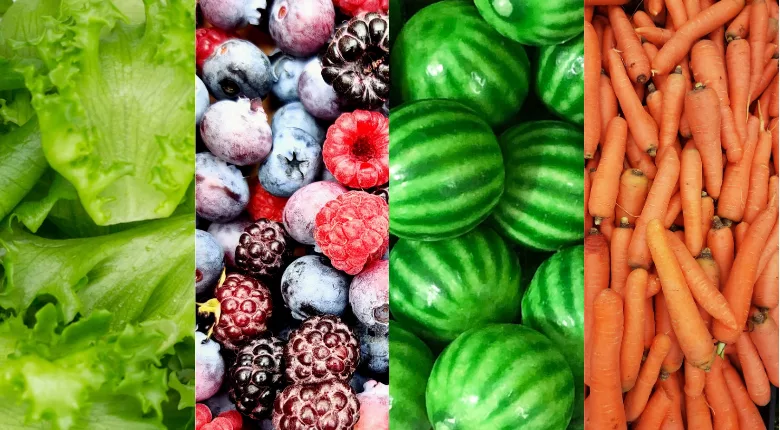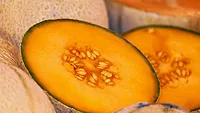FAO/WHO Publishes Report on Commodity Specific Microbial Interventions for Fresh Fruits, Vegetables

The Food and Agriculture Organization (FAO) and the World Health Organization (WHO) recently published a Joint FAO/WHO Expert Meetings on Microbial Risk Assessment (JEMRA) report on commodity specific prevention and control measures for microbial hazards in fresh fruits and vegetables.
The report evaluates interventions against various target pathogens (including bacteria, parasites, and viruses) from primary production to post-harvest activities, transportation, point-of-sale, and preparation for consumption. Intervention stage and intervention type (physical, chemical, or biological) were also considered. Specifically, the report focuses on control measures for four commodity groups: leafy vegetables and herbs, berries and tropical fruits, melons and tree fruits, and seeded and root vegetables.
The expert committee conducted a literature review of studies published from 2008–2022 to identify interventions, and for each intervention, the researchers further reviewed available information and data to assess the efficacy and practical merit of the control measure.
Across all fruits and vegetables, the expert committee’s research reaffirmed the importance of implementing good agricultural practices (GAPs) and good hygiene practices (GHPs) during primary production, as well as GHPs, good manufacturing practices (GMPs), and Hazards Analysis and Critical Control Points (HACCP)-based systems during postharvest. Treatment of irrigation water and process water to maintain adequate microbiological quality was also underlined as crucial to preventing contamination of any commodity. Although some physical methods—like ultraviolet (UV), plasma, pulsed light, and ultrasound treatments—have been evaluated for disinfecting process water, more work is required to enable industry uptake.
Moreover, the lack of industry uptake of interventions indicates a need for research to address the practicality of new technologies, and to examine their performance under conditions that either closely simulate real-life operations. Further research is also required to expand the knowledge about interventions, which disproportionately focuses on bacterial pathogens, to more comprehensively address viruses and parasites.
In the report, JEMRA also highlighted key conclusions for each of the four commodity groups as follows:
Leafy Vegetables and Herbs
- No postharvest interventions for the treatment of whole produce reliably deliver significant reductions in pathogens
- Irradiation has shown to be most effective postharvest treatment, with pathogen reduction in excess of 5 log being reported for a range of commodities
- Experimental evidence suggests that electrolyzed water in combination with other physical treatments, such as ultrasound or UV, can reduce bacterial pathogens by 3–5 log on the surface of leafy vegetables, but complexity and cost of the technology are prohibitive to its use
- Application of bacteriophage or phage lysins have been reported to reduce bacterial pathogens by greater than 3 log on fresh and fresh-cut leafy vegetables, but data about the new approach is limited, and it may come with constraints like narrow strain specificity, absence of effects against viruses and parasites, and cost
- There is very scant research on alternative biocides for use in fresh and fresh-cut processing, however, one study of a novel biocide showed a greater than 5 log reduction in pathogens on cut lettuce leaves; barriers to regulatory approval may be one reason that research on biocides is so scarce.
Berries and Tropical Fruits
Looking for quick answers on food safety topics?
Try Ask FSM, our new smart AI search tool.
Ask FSM →
- Research is limited for the mitigation of protozoa on berries or on interventions for tropical fruits in general, but several papers exist on virus mitigation for strawberries, blueberries, and raspberries
- Water-assisted light treatments (e.g., UV and pulsed light) of berries resulted in greater than 4–5 log reductions in some situations, although the efficacy is dependent on how the berries are inoculated
- Ultrasound treatment in combination with a biocide showed some efficacy, with 2–3 log reductions in some situations, although adverse effects on product quality were reported, such as reduced firmness in strawberries
- Gaseous treatments (e.g., controlled-release pads, fumigation, and fogging with chlorine dioxide or sulfur dioxide) had variable effects depending on the dose and pathogen assessed.
Melons and Tree Fruits
- Hygienic handling, environmental hygiene, and environmental monitoring during the sorting and packing of melons and tree fruits is the most important intervention to preventing contamination
- Managing the microbiological quality of process water is key, with UV-C and biocides being effective interventions
- Although decontamination treatments exist for pathogen reduction on melons and tree fruits, efficacy is relatively low and dependent upon rind characteristics/fruit surface and other factors; the most commonly referenced treatments in literature are UV-C light and heat, which generally achieve 1–2 log reductions
- Specific for pome fruit, the use of gaseous biocides in the atmosphere during prolonged refrigerated storage (e.g., controlled atmosphere of low oxygen and ultra-low oxygen) was shown to be significantly effective.
Seeded and Root Vegetables
- Irradiation is the most effective postharvest treatment for seeded and root vegetables, showing 3–5 log inactivation of Salmonella on green onions, baby carrots, and grape tomatoes while extending shelf-life and without harming product quality
- Gas phase chlorine dioxide (ClO2) treatment has shown efficacy ranging from 2–5 log reduction on contaminated vegetables
- UV-C shows promise for bacterial surface decontamination of vegetables (approximately 2 log reduction) with evidence for inactivation on crops like tomatoes, cucumbers, and jalapeno peppers; the treatment has less efficacy on crops with greater shadowing or porosity
- Treatment using a low dose of UV-C light with biocides provided a greater than 4 log reduction in Salmonella on tomatoes
- Delivery of biocides can be improved by physical means, for example, vacuum impregnation during a washing process with 2 percent malic acid reduced levels of pathogens on paprika, peppers, and carrots; however, there are drawbacks to practical application like extended processing time and requirement of batch processing.
The report updates and expands previous JEMRA work on the safety of fruits and vegetables and supports work being conducted by the Codex Alimentarius Commission on the development of guidelines for the control of Shiga toxin-producing Escherichia coli (STEC) in leafy greens and sprouts.









